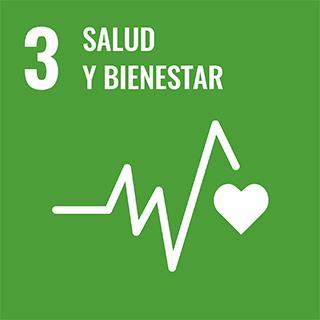
Indexado en
Licencia y uso

Impacto en los Objetivos de Desarrollo Sostenible (ODS)

Análisis de autorías institucional
Ibarretxe DAutor o CoautorDiagnosis of Familial Dysbetalipoproteinemia Based on the Lipid Abnormalities Driven by APOE2/E2 Genotype
Publicado en:Clinical Chemistry. 69 (2): 140-148 - 2023-02-01 69(2), DOI: 10.1093/clinchem/hvac213
Autores: Bea AM; Cenarro A; Marco-Bened V; Laclaustra M; Martn C; Ibarretxe D; Pint X; Arrobas T; Vials C; Civeira F; Olmos S
Afiliaciones
Resumen
Familial dysbetalipoproteinemia (FDBL) is a monogenic disease due to variants in APOE with a highly variable phenotype. Current diagnostic lipid-based methods have important limitations. The objective is twofold: to define characteristics of dysbetalipoproteinemia (DBL) based on the analysis of APOE in patients from a lipid unit and in a sample from the general population, and to propose a screening algorithm for FDBL.Lipids and APOE genotype from consecutive unrelated subjects from Miguel Servet University Hospital (MSUH) (n = 3603), subjects from the general population participants of the Aragon Workers' Health Study (AWHS) (n = 4981), and selected subjects from external lipid units (Ext) (n = 390) were used to define DBL criteria and to train and validate a screening tool.Thirty-five subjects from MSUH, 21 subjects from AWHS, and 31 subjects from Ext were APOE2/2 homozygous. The combination of non high-density lipoprotein cholesterol (non-HDLc)/apoB ≥1.7 plus triglycerides/apoB ≥1.35, in mg/dL (non-HDLc [mmol/L]/apolipoprotein B (apoB) [g/L] ≥4.4 and triglycerides [mmol/L]/apoB [g/L] ≥3.5), provided the best diagnostic performance for the identification of subjects with hyperlipidemia and APOE2/2 genotype (sensitivity 100% in the 3 cohorts, and specificity 92.8% [MSUH], 80.9% [AWHS], and 77.6% [Ext]). This improves the performance of previous algorithms. Similar sensitivity and specificity were observed in APOE2/2 subjects receiving lipid-lowering drugs.The combination of non-HDLc/apoB and triglycerides/apoB ratios is a valuable tool to diagnose DBL in patients with hyperlipidemia with or without lipid-lowering drugs. FDBL diagnosis requires DBL and the presence of a compatible APOE genotype. Most adult APOE2/2 subjects express DBL, making FDBL as common as familial hypercholesterolemia in the population.© American Association for Clinical Chemistry 2023. All rights reserved. For permissions, please e-mail: journals.permissions@oup.com.
Palabras clave
Indicios de calidad
Impacto bibliométrico. Análisis de la aportación y canal de difusión
El trabajo ha sido publicado en la revista Clinical Chemistry debido a la progresión y el buen impacto que ha alcanzado en los últimos años, según la agencia WoS (JCR), se ha convertido en una referencia en su campo. En el año de publicación del trabajo, 2023, se encontraba en la posición 1/31, consiguiendo con ello situarse como revista Q1 (Primer Cuartil), en la categoría Medical Laboratory Technology. Destacable, igualmente, el hecho de que la Revista está posicionada por encima del Percentil 90.
Desde una perspectiva relativa, y atendiendo al indicador del impacto normalizado calculado a partir del Field Citation Ratio (FCR) de la fuente Dimensions, arroja un valor de: 7.68, lo que indica que, de manera comparada con trabajos en la misma disciplina y en el mismo año de publicación, lo ubica como trabajo citado por encima de la media. (fuente consultada: Dimensions Jun 2025)
De manera concreta y atendiendo a las diferentes agencias de indexación, el trabajo ha acumulado, hasta la fecha 2025-06-07, el siguiente número de citas:
- Scopus: 10
- Open Alex: 9
- OpenCitations: 7

